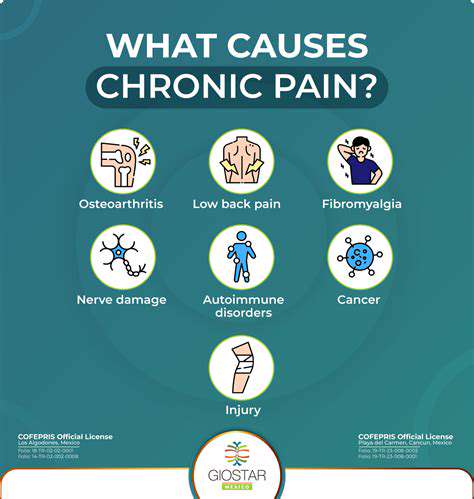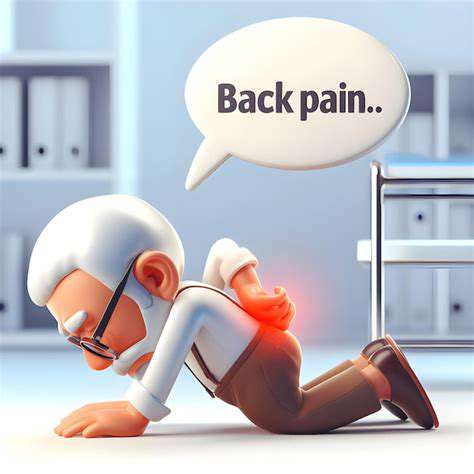Types of Severe Pain and Their Symptoms
1. Nerve Pain
Nerve pain, often referred to as neuropathic pain, can manifest in various forms such as sharp, shooting sensations or a constant burning feeling. This type of pain arises from damage or dysfunction in the nervous system. It can be caused by conditions such as diabetes, multiple sclerosis, or herniated discs.
Individuals experiencing nerve pain may also report symptoms like tingling, numbness, or sensitivity to touch. These sensations can be localized or radiate to other parts of the body, making daily activities challenging.
Effective treatment for nerve pain often involves a combination of medications, such as antidepressants or anticonvulsants, and physical therapy. In some cases, more advanced options like nerve blocks or spinal cord stimulators may be explored.
Seeking medical assistance for nerve pain is crucial, as untreated nerve damage can lead to chronic pain conditions and diminished quality of life. Early intervention can help manage symptoms and prevent further complications.
2. Musculoskeletal Pain
Musculoskeletal pain affects the bones, muscles, ligaments, tendons, and nerves. This type of severe pain can arise from injuries, overuse, or chronic conditions such as arthritis or fibromyalgia. Symptoms may range from deep, aching sensations to sharp, localized discomfort.
Common areas affected by musculoskeletal pain include the back, neck, shoulders, and joints. Individuals might experience swelling, stiffness, or decreased range of motion, which can significantly impact daily functions and overall mobility.
Managing musculoskeletal pain often requires a comprehensive approach, including physical therapy, pain relief medications, and lifestyle adjustments such as exercise and ergonomic improvements. In some instances, surgical interventions might be necessary to address underlying issues.
It is vital for individuals experiencing persistent musculoskeletal pain to consult healthcare professionals to develop a tailored treatment plan that addresses both symptoms and root causes for long-term relief.
3. Visceral Pain
Visceral pain originates from internal organs, such as the stomach, intestines, or heart. This type of pain can be challenging to pinpoint, as it often presents as a generalized ache or discomfort that is hard to localize. Common causes include gastrointestinal disorders, cardiovascular diseases, or reproductive system issues.
Symptoms of visceral pain may include cramping, pressure sensations, or sharp pains that can fluctuate in intensity. Patients may also experience associated symptoms like nausea, vomiting, or changes in bowel habits, which can complicate the diagnosis.
Diagnosing the cause of visceral pain often requires a thorough medical evaluation, including imaging studies and laboratory tests. Treatment may involve medication to alleviate pain or treat the underlying condition, lifestyle modifications, or dietary changes.
Common Causes of Severe Pain Symptoms

Understanding Chronic Conditions
Chronic conditions such as arthritis, fibromyalgia, and migraines can lead to severe pain symptoms that persist over time. Identifying these conditions early can significantly improve management and treatment outcomes.
It's essential for individuals experiencing chronic pain to work closely with healthcare providers to develop a tailored approach that addresses their specific needs.
The Role of Injury and Trauma
Injuries from accidents, falls, or sports can result in acute severe pain. The initial trauma may lead to immediate pain, but underlying damage may cause lasting discomfort and functional issues.
Mental Health and Pain Perception
Mental health conditions like anxiety and depression can amplify the perception of pain. Individuals with these conditions may experience heightened sensitivity to pain stimuli, making it crucial to address both mental and physical health.
Therapeutic approaches, including cognitive behavioral therapy, can be beneficial in managing pain by helping individuals reshape their thoughts and responses to pain.
Lifestyle Factors Influencing Pain
Lifestyle choices, such as poor diet, lack of exercise, and smoking, can contribute to the intensity of severe pain symptoms. Making positive lifestyle changes can help reduce pain levels and improve overall health.
Engaging in regular physical activity, maintaining a balanced diet, and finding healthy coping mechanisms can profoundly impact pain management.
When to Seek Medical Attention
It's important to recognize when severe pain becomes a medical emergency. Symptoms such as sudden, intense pain, pain accompanied by fever, or pain following an injury should prompt immediate medical consultation.
Timely intervention can prevent complications and lead to more effective treatments, ensuring that individuals don’t suffer for too long.
Seeking Relief from Severe Pain Symptoms

Understanding the Nature of Severe Pain
Severe pain can manifest in various forms, including acute, chronic, sharp, or dull sensations. Understanding the type of pain you are experiencing is crucial for effective treatment. Each type of pain may signal different underlying issues that require tailored approaches to relief.
For instance, acute pain often arises from an injury or surgery, while chronic pain may result from conditions like arthritis or fibromyalgia. Identifying the characteristics of your pain can help healthcare providers formulate a more accurate diagnosis.
Common Causes of Severe Pain Symptoms
There are numerous potential causes of severe pain, ranging from injuries and medical conditions to psychological factors. Conditions such as migraines, herniated discs, and shingles are known to produce severe pain symptoms. Understanding these causes is vital in addressing your pain effectively.
Injuries from accidents or sports can also lead to acute severe pain, necessitating immediate medical attention. In some cases, pain can be indicative of more serious health issues, such as infections or tumors, making early diagnosis essential.
Benefits of Early Diagnosis and Treatment
Seeking medical advice early can significantly impact the outcome of pain treatment. By identifying the source of pain sooner, patients can explore various treatment options tailored to their specific needs and conditions.
Effective treatment plans can alleviate symptoms, enhance mobility, and improve the overall quality of life. Moreover, early intervention can prevent the progression of chronic pain conditions. This proactive approach may involve a combination of medications, physical therapy, and lifestyle changes.
Holistic Approaches to Pain Management
In addition to conventional medical treatments, holistic approaches can also play a pivotal role in managing severe pain symptoms. Techniques such as acupuncture, massage therapy, and mindfulness meditation have gained popularity for their potential to alleviate pain and promote relaxation.
Integrating these holistic methods with traditional medical treatments can lead to a more comprehensive pain management strategy. It’s important to consult with healthcare professionals about the best practices that align with your specific pain elements and overall health goals.